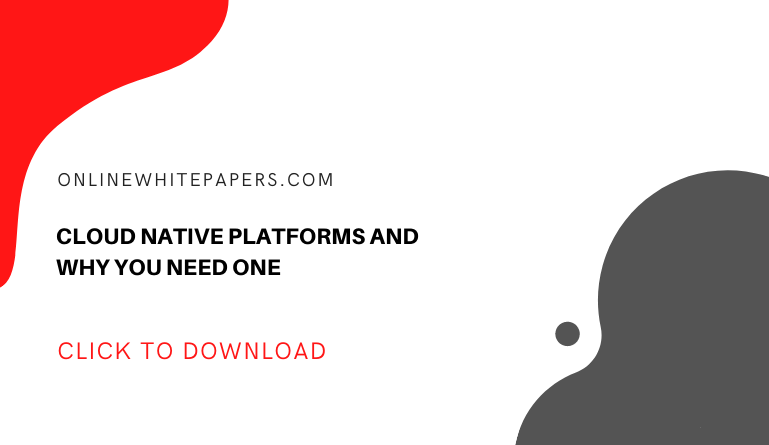For enterprises, cloud computing has come as a boon, as it helps deliver IT services and resources in an on-demand mode, without organizations having to invest in infrastructure or specialists to serve their purpose. Going one step further, the latest innovation of edge computing vs. fog computing now helps enterprises to crunch massive volumes of data for their requirements. In the absence of these innovations, enterprises faced extensive latency due to data traffic. With edge computing and fog computing, large amounts of data can be processed in seconds to create a faster response.
For instance, let’s take the example of Tesla’s self-driving model, where the sensors continuously monitor the movement of the car. The moment there is an obstacle, the car must stop and or probably navigate and move around without causing any injury to the pedestrian. In this case, when there is an obstacle to the car, the data must be transmitted and processed very fast to avoid any accident. The slightest delay can prove dangerous. To address such challenges, edge computing, and fog computing process data and provide the best actions immediately.
Edge computing
In the case of this technology, computing happens at the edge of a device’s network. This essentially means that the computer is connected to the network located in the device. This network then processes the data and transmits it to the cloud server on a real-time basis. This particular computer that executes this task is known as the edge computer or edge node.
Using this technology, the data is instantly processed and transmitted to the device. The only catch here is that the edge nodes will transmit all types of data, even if it is of low or no significance. This can be addressed by another technology called fog computing.
(Detailed Guide – What is Edge Computing? – All You Need to Know)
Fog computing
This technology or computing methodology is nothing but an extension of cloud computing. It basically acts as a layer between the cloud and the edge network. When the edge computing devices start transmitting the data to the cloud server, the fog nodes receive the data from edge devices and filter out the important ones that need to be further passed on to the cloud server.
The unimportant data are either deleted by the fog nodes or stored at their end for additional analysis at their end. As a result, fog nodes ensure that the cloud storage is not occupied with unwanted data and then further processes and transfers this data quickly.
How Edge Computing vs. Fog Computing are Deployed
| Edge Computing | Fog Computing |
|---|---|
| Comparatively less scalable than fog computing. | On the contrary, fog computing is extremely scalable. |
| There are billions of edge nodes present in this methodology. | There is a presence of millions of fog nodes in this methodology. |
| Nodes are technically installed at a distance from the cloud. | Nodes are installed relatively closer to the cloud (technically a remote database where data is stored). |
| Edge computing is technically a subset of fog computing. | Fog computing is a subset of cloud computing. |
| Since the data comes from the edge nodes, the requirement of bandwidth is very low. | Since fog nodes transmit the data coming from edge nodes to the cloud server, after processing it, there is a requirement for high bandwidth. |
| The cost of operations is very high. | Compared to edge computing, the cost of operations is lower. |
| Edge computing maintains high privacy and the possibility of data attacks is very low. | There is a higher risk of the data facing cyberattacks. |
| IoT devices are considered to be a part of the edge devices that operate on the client network. | Fog is nothing but an extension of the cloud. |
| In the case of edge computing, the nodes consume less amount of power. | Since fog nodes receive data from the edge devices and then process and further transmits to the cloud server, the power consumption is more. |
| It helps in deriving faster results by simultaneous processing of data that is received from devices. There is no filtering. | Fog computing is all about filtering the data coming from edge devices and then further transmitting important data only. |
| An edge computer has the competency of processing business applications. After processing edge devices can also transfer the data directly to the cloud for further storage.
What this indicates is that edge computing is definitely possible without the presence of fog computing. |
If we go by definition, a fog device does not have the ability to collect or generate any type of data. All it can do is filter data coming from edge computing devices.
Thus, we can say that fog computing is directly dependent upon edge computing and cannot exist without it. |
| Some of the use cases of edge computing are predictive maintenance and healthcare applications.
Another use case of edge computing is high-scale multiplayer gaming, |
If we want to talk about the application of fog computing, then we can see it being effectively used in self-driven vehicles or autonomous vehicles.
Another use case is the application on smart grids along with usage in real-time analytics. |
(Also Read: Edge Computing vs Cloud Computing: The Difference)
Final Thoughts
Now that you know where to use edge computing vs. fog computing and their ability to bring the computer data closer to the source of data, use them effectively. It will ensure that the information is processed without any immediate requirement of a central cloud server. Both these methodologies are upcoming technologies, which will have multiple applications in the future. Share how your business can benefit using edge computing vs. fog computing in the comments below.






